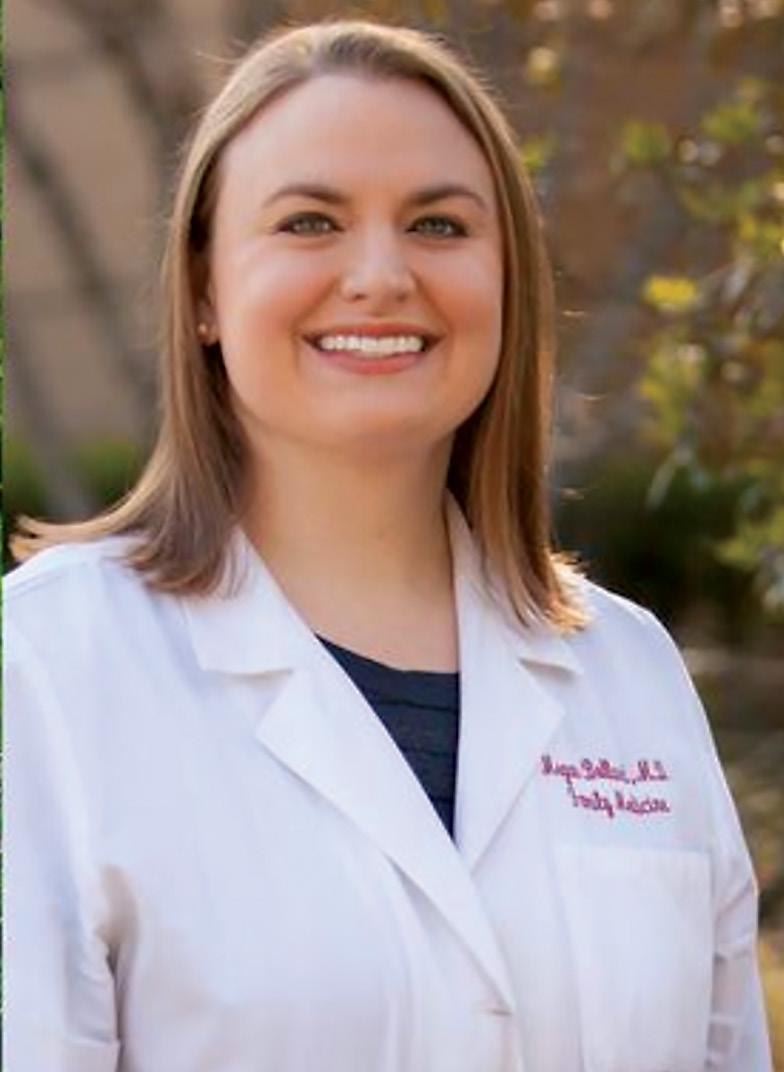
2 minute read
ASK THE SPECIALIST: Using “My Plate” to Plan Healthy Meals
Using “My Plate” to Plan Healthy Meals By Dr. Megan Bullard
Some children like to pick foods based on color. If orange is the color of choice, a plate of macaroni and cheese, carrots and chicken nuggets would fit that requirement quite nicely. But a healthy diet doesn’t focus on the color of the food. Rather, it should incorporate a variety of foods – of different colors – that includes more fruits and vegetables and smaller portions of protein and grains. The food plate by the U.S. Department of Agriculture (USDA) is intended to help Americans eat a healthier, balanced diet. The visual nutrition guide, which replaces the food pyramid, uses color-coded, easy-to-read graphics with proportionate sections for fruits (red), vegetables (green), protein (purple), grains (orange), and a separate segment for dairy (blue). The plate is designed to encourage people to balance calories while increasing some foods and decreasing others. Here are a few ways to use the food plate to plan your own meals that can be both colorful and healthy:
Advertisement
Go green.
Vegetables are not only full of vitamins and minerals, but they also can brighten your plate. Try broccoli, cherry tomatoes, acorn squash and sweet potatoes that taste great and are good for you. Remember to keep frozen and canned vegetables on hand for a quick-and-easy dish to add to any meal.
Think red.
Dried, frozen, fresh or canned fruits provide nutrients that are important for health, including potassium, dietary fiber, vitamin C, and folic acid. Try adding fruits such as bananas or blueberries in your breakfast cereal, pick up a tangerine or some grapes to go with lunch, snack on some raisins, and add dried cranberries or orange sections to a salad at dinner.
Pick purple.
Most people should eat five to six ounces of protein foods daily. Choose lean or low-fat cuts of meat and avoid deli meats. It’s okay to have one egg a day and opt for seafood twice a week. Try beans, peas, soy products, nuts and seeds that are good sources of protein and also naturally low in saturated fat and high in fiber.
Try orange.
Whole grains as part of a healthy diet can help reduce the risk of some chronic diseases. Choose foods that list a whole-grain ingredient first, such as brown or wild rice, bulgur, buckwheat, oatmeal, whole-grain cornmeal, and whole wheat, oats or rye. Try eating whole-wheat pasta, using barley in vegetable soup, or substituting millet or oat flour in muffin mixes.
Be blue.
Dairy products such as milk, yogurt, cheese and fortified soymilk provide calcium, vitamin D, potassium, protein and other nutrients. Choose fat-free or low-fat milk and look for reduced-fat or low-fat cheeses. Avoid regular cream cheese, cream and butter that are high in saturated fat. People who are lactose-intolerant can try lactose-free milk or soy milk for calcium.
A healthy diet for a healthy lifestyle starts with balancing portions so you get enough of what you need without too many calories. For more information about making healthier food choices, talk with your doctor or visit the USDA My Plate website www.choosemyplate.gov. A healthy diet for a healthy lifestyle starts with balancing portions so you get enough of what you need without too many calories.
Dr. Megan Bullard is affiliated with Shelby Baptist Medical Center, and part of the Columbiana Clinic in Columbiana.





